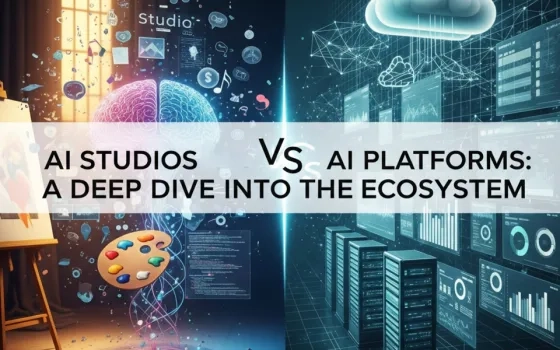Internet of Things (IoT) holds one of the biggest potential for human life change. It might become the fastest growing market in next couple years but the more important thing is that the development in related areas is interconnecting. Since IOTA has been released, we gained the whole new perspective not only for IoT, but for Industry 4.0 itself.
The recent boom in the cryptocurrency market proved one more time that decentralization is a real thing and our society will get to that point sooner or later. For a long time I believed that blockchain is a revolutionary system that will change our lives, starting from cryptocurrency and changing the old banking system. When I heard about IOTA I realized that there is no end and even blockchain won’t rule forever.
In this article, I tried to collect the most relevant information, how IOTA will change the economy of Internet of Things (IoT). We hear many news about self-driving cars, smart fridges and intelligent drones but very few from behind the scene. I will try to connect as many dots as possible to give you a quick overview to the upcoming future.
Lets jump right into it!
Upadate December 2017: Bitfinex stopped registration for new users. If you want to buy IOTA I recommend Binance exchange.
The price went recently from 1 USD up to 5 USD. Be careful there will be increased volatility in coming days. As you will read bellow, IOTA is my favourite cryptocurrency and I believe that we will see the price much more higher in 2018.
I do not recommend trading but buying IOTA and holding!
The future of Internet of Things
Before Internet of Things becomes an integrated part of our everyday life it has to overcome many obstacles. Using smart watch and collect data from our morning run is what we experience today, but in couple years there will be interconnected every single device we use and all machines will communicate to each other.
Since we imagine such a world with billions of devices, machines and humans that are communicating with each other, we are facing a huge problem with actual infrastructure and hardware/software standards. In other words scaling will cause problems.
The latest tech development that we can demonstrate on this very clearly is a cryptocurrency market.
Breaking the status quo twice in a row
If you imagine millions of tiny transactions there is no way to proceed it with a central payment processors without any fees. That’s how standard banks work and that is the world we live in today.
Micro-transaction that are based on blockchain brought a revolution to our economy. 7 years ago someone by a pseudonym Satoshi Nakamoto invented Bitcoin and since then we have witnessed lots of different cryptocurrencies and projects that tackle many problems of our economy and society. For sure some of them will play important part in sharing economy Internet of Things but to be honest none of them will provide true real time micro-transactions.
Why is that?
Because all of them (so far) are based on blockchain, mostly connected to Bitcoin or Etherium development. The problem is that current blockchain incarnations aren’t able to scale to a high number of transactions per second and at the same time provide stable infrastructure and run on a lightweight hardware. Moreover, with scaling there is always increase of transaction fees.
Always,…until now!
IOTA makes a real difference
IOTA is a new cryptocurrency that focused on Machine-2-Machine (M2M) transactions. The main purpose of IOTA is to serve the machine economy by enabling feeless M2M (Machine-to-Machine) payments.
How does IOTA do that?
IOTA goes beyond blockchain. It is the first cryptocurrency that provides the whole ecosystem based on blockless blockchain.
What is IOTA?
IOTA provide efficient, secure, lightweight, real time micro-transactions without fees. It is open-source, decentralized cryptocurrency, engineered specifically for Internet of Things, its real-time micro transactions and providing ecosystem that is ready and flexible for scale.
3 reasons why is IOTA revolucionary
- Zero transaction costs
- Potential for indefinite scalability
- Offline transactions
- Tangle, the core innovation of IOTA
IOTA is often consider as an alternative coin (altcoin), but the truth is that IOTA is not just an altcoin, it is an extension of blockchain ecosystem. IOTA goes beyond blockchain. IOTA is based on Tangle instead of blockchain.
Tangle vs. Blockchain
What is Tangle? With simple words we would say, that Tangle retain the blockchain features of the distributed ledger and secure transactions, but does not work with blocks. Instead of blocks (regular blockchain), Tangle uses the form of a Directed Acyclic Graph (DAG).
Raw Tangle illustration from David Sonstebo
Directed Acyclix Graph (DAG)
Why is DAG better than blockchain? Because DAG technology enables various features like zero-cost transactions, infinite scalability or offline transactions that blockchain simply cannot do and will neither probably be developed to do.
A traditional blockchain technology works like this:
Various transactions are bundled in each block and after that they can be verified by miners. That means that with increase of transaction there will be more job for miners. What we experienced so far with Bitcoin (and Etherium as well), that also means increase of transaction fees.
A Tangle works like this:
In the Tangle, each transaction forms a new block and it is verified by itself. To be able proceed this verification it has to first verify two randomly chosen transactions in the network.
IOTA’s architecture is inherently decentralized on a level that no blockchain can match, due to the fact that users and validators are one and the same in Tangle.
Almost like perpetum-mobile, right? Of course there is a cost of every transaction, but the cost is “to verify other transactions”. The idea behind is very clear: IOTA creates self-sustainable economy that is based on demand. That’s why we talk that Tangle run with zero-cost transactions.
This model has one more benefit. There is no limit for scaling. The problem that we face right now with cryptocurrencies (based on blockchain) is scalability. The IOTA network could become indefinitely scalable with zero cost because every new transaction verifies two new transactions in the network. One more and more people join and send transaction, IOTA will grow and scale smoothly. A Tangle brings solution for scalability with zero cost, that is revolutionary!
From the Internet of Things to Internet of Everything
Internet of Things is spreading like crazy. Almost every week we can see start-ups introducing a new SmartSomething. This is 4 th Industrial revolution, where technology takes a lead. The big step in our evolution is hidden in technology, indeed.
In following years there will be a huge development in SmartTransport (not just SmartCars), SmartHomes, SmartFinance, SmartPlants, etc. And this is just the beginning.
SmartEverything goes beyond Internet of Things
Internet of Things (IoT) is not just a buzzword. It will revolutionize our life on this planet, no doubt. The challenge is not in development the smart devices or machines, but in communication level. Once we solve that, there will be a huge step forward.
Imagine the whole world with ability to communicate. As far we were considering smart things as a devices that interconnect human communications. But we need a different perspective. There will be soon more machines than humans! We need to be able to speak with machines and we need to provide a network for machines to communicate with another machines (devices).
We aren’t talking just about Internet of Things (IoT), now we are talking about Internet of Everything (IoE).
IOTA creates an environment for IoE
Now, IOTA is coming! IOTA Foundation create an environment for Internet of Everything (IoE). The IOTA platform can be presented as a bridge via systems can connect, communicate and evolve.
The interconnectivity is the key for our new economy. With interconnectivity comes incredible huge amount of data that devices send and receive every seconds.
To take full benefit from the IoT and IoE we have to find a way how to connect the billions of cyber-physical systems together. The network we set up has to gain our trust.
Human kind is nowadays dependant on Internet. Can you imagine what will happen if the Internet goes down. Even just for one day or one hour. The future of fully operational status of our society and economy lies in the 24 hour-stable communication (interconnection). The Internet is by far the most efficient medium but we can’t afford to use just that. The consequences of depending on one single channel would be catastrophic. IOTA developed a protocol on which the machines can communicate via other channels, such as Bluetooth, Z-wave, ZigBee or LoRa. The future of connectivity might lie beyond the Internet itself.
IoE: Sensors as an example
The market of IoE rapidly increasing. Let’s talk about sensors, the area of market that you might not heard about yet, but will have significant impact on our economy and social life.
The number of sensors especially due to demand in SmartHomes and SmartCities is growing like crazy. Sending and receiving data is just the beginning of the chain. There is no doubt we will need more computational power. The big data in our new economy needs to be analyzed first and reported as soon as possible. Cloud storage nowadays cannot provide us real-time results that we require. We need smart sensors, that have computational ability itself and are able to work with other stations as well. Instead of Cloud computing we talk about Fog computing and Mist computing. Find the difference in an easy explanation.
There will be billions of sensors by the 2025. Data won’t be shared freely and that is a potential for cooperation among companies and individuals. IOTA will provide the platform for exchange (data for money).
Just imagine that once you gather some data, you can sell them, as well as you can sell your free storage. Selling it means to get compensation with IOTA currency. There won’t be just distributed computing, data and storage, but also distributed brandwith and energy. The future of Internet of Everything is coming. But untill it reaches our everyday life, we need to do some changes starting on recognition of smart devices.
Identity of Things (IDoT)
To make IoT ecosystem secure, we need to think about machines and devices differently, not just as a metal things without life. We need to consider each device as its own identity.
Why?
Because the identity carries some attributes and we cannot securely and efficiently work with IoT without knowing more.
One of the biggest challenge for IoT will be the maintenance. Creation is hard process, but to maintain IoT (means also keep them resilient) is a long-term task, that cannot be undervalued. Look at any software and application that you use on PC or smartphone. How many times did you update it? Maintenance is a new angle of re-creation process.
So far we use one unique identifier for devices, but that is not enough to satisfy our future needs — secure status and smooth long term usage.


















